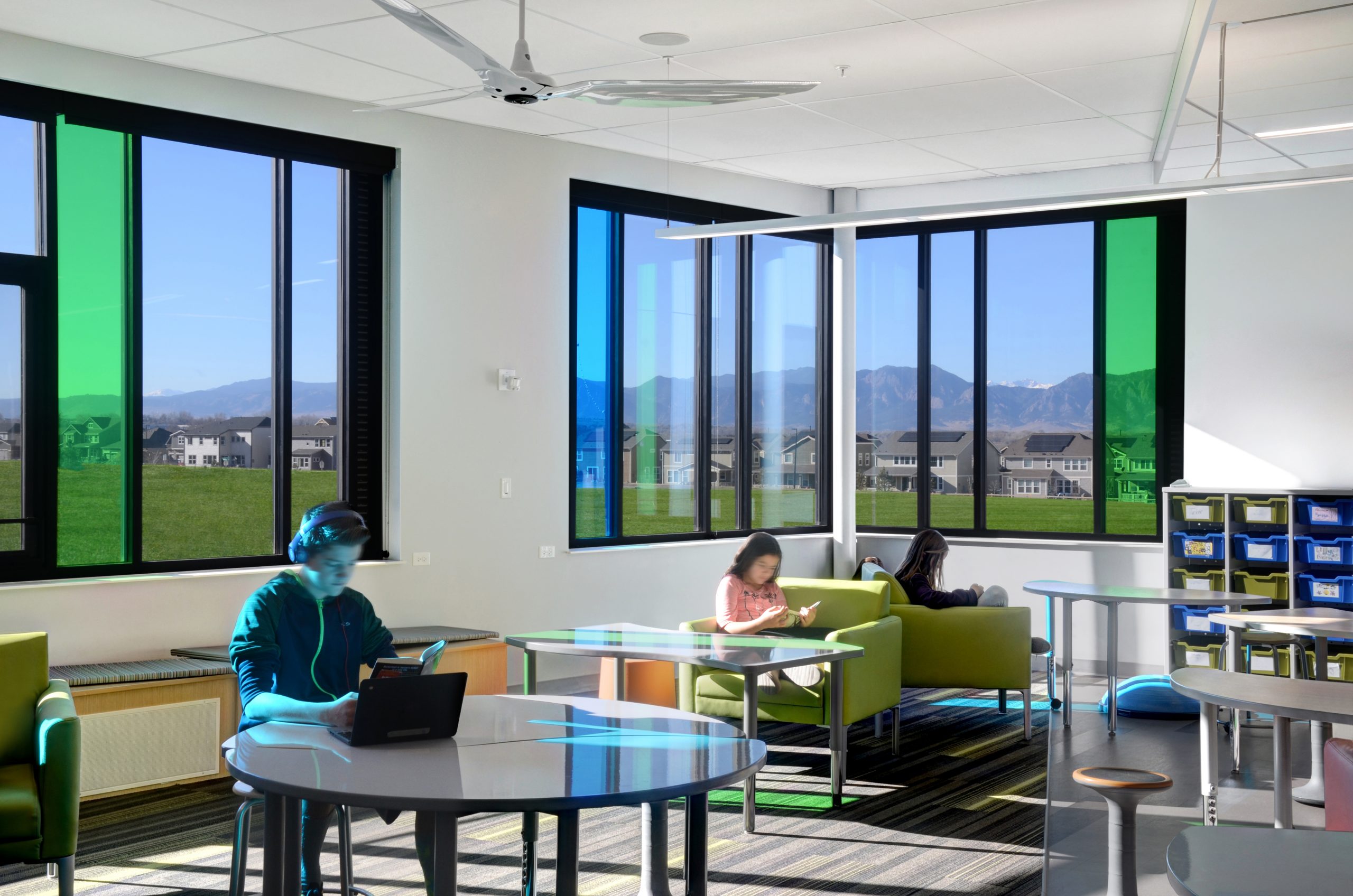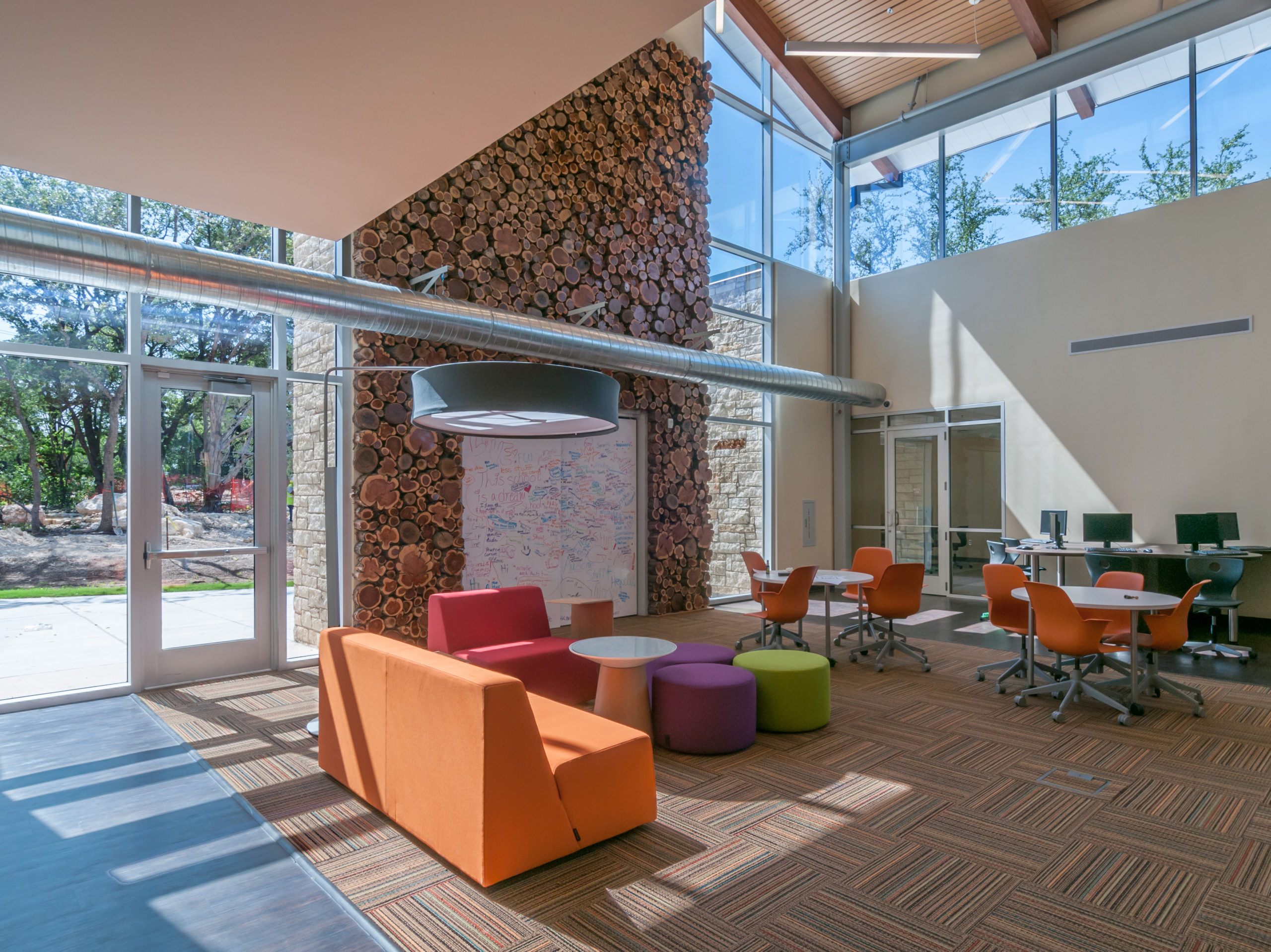
Lighting, Learning, & Color
Lighting, Learning, & Color
Problem
Lighting in schools is largely based on a factory model that features uniform brightness and a focus on the “teaching wall” – this makes sense for a 19th-century approach to production, or for robots, but fails to respond to human needs for varied, nuanced environments.
Solution
Provide natural lighting wherever possible, as well as a variety of electric lighting types and levels to respond to the varied needs of individual learners. Four types of lighting are ideal, including: a) General Lighting, spaced in a regular pattern, and if feasible, dimmable, with a portion of the light reflecting off of the ceiling and a portion directed downwards; b) Directional Lighting, highlighting features and walls with “color pops,” sparking movement, as learners will tend to look and then move toward brighter light levels; c) Ambient lighting, including desk lamps, standing lamps, hanging pendants and accent lighting that creates focal points with various colors and brightness levels; and d) Work/Utility Lighting, which includes brighter lighting levels for storage and work areas.
Related Patterns Learning Community, Student Display Space, Cave Space, Daylighting
View Image Gallery







Learn More
- Lighting Design for Schools and Universities in the 21st Century
Lighting insights from Randy Fielding
- What They See is What They Get
This article exposes 10 common myths on lighting and color in schools.
- Learning, Lighting and Color: Lighting Design for Schools & Universities
This article illustrates the importance of lighting and color design for learning spaces and dispels seven myths about color and lighting in educational architecture.
- An Interview with Randy Fielding on Lighting
Video on lighting illuminates fixture types, placement, and color properties of various lamp types


